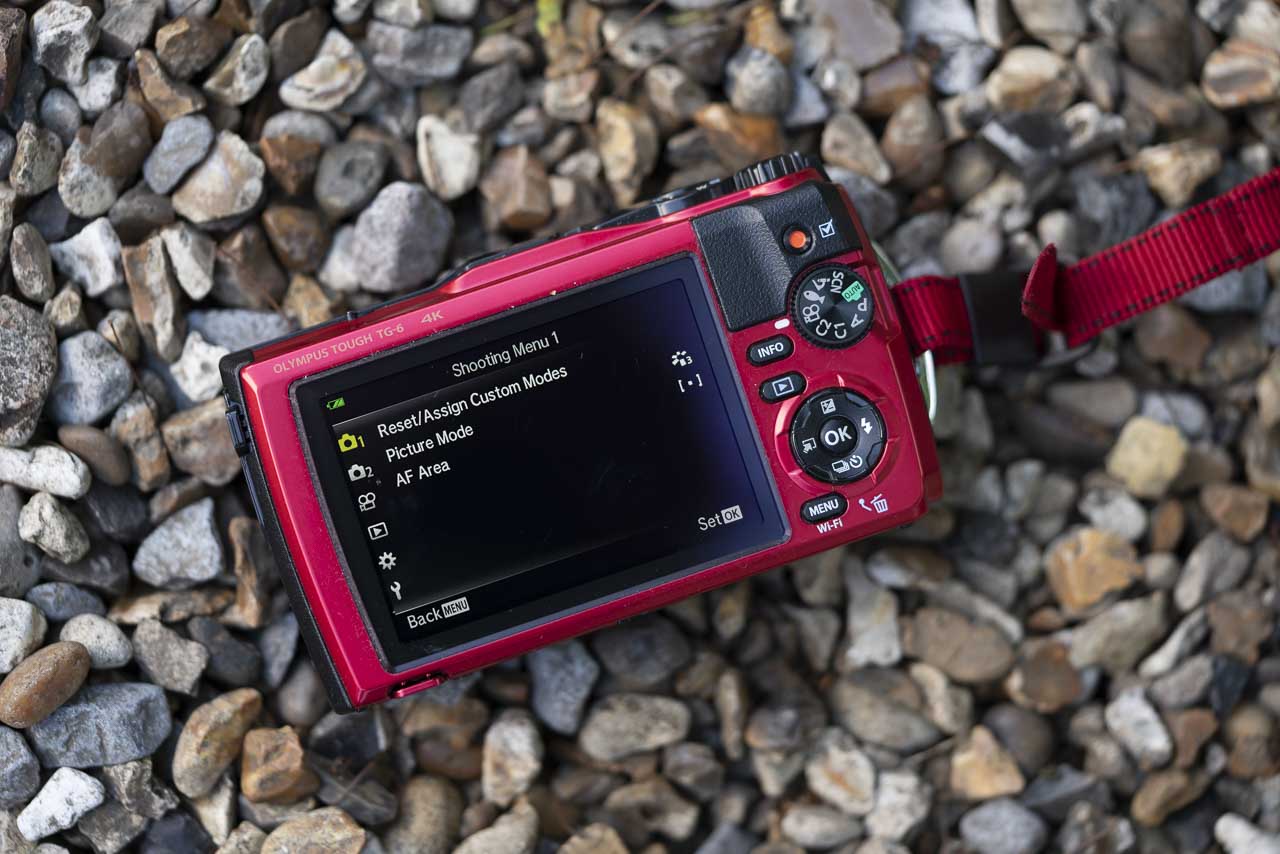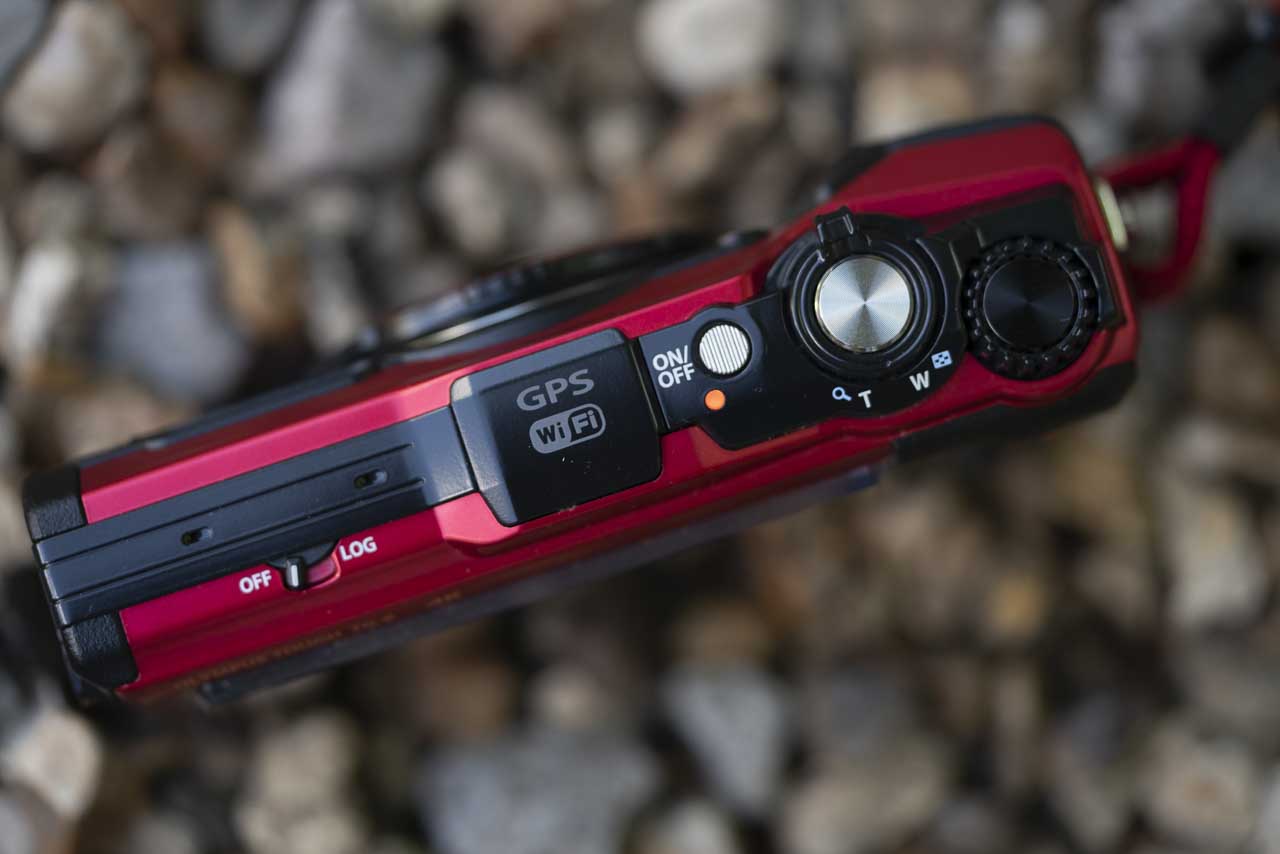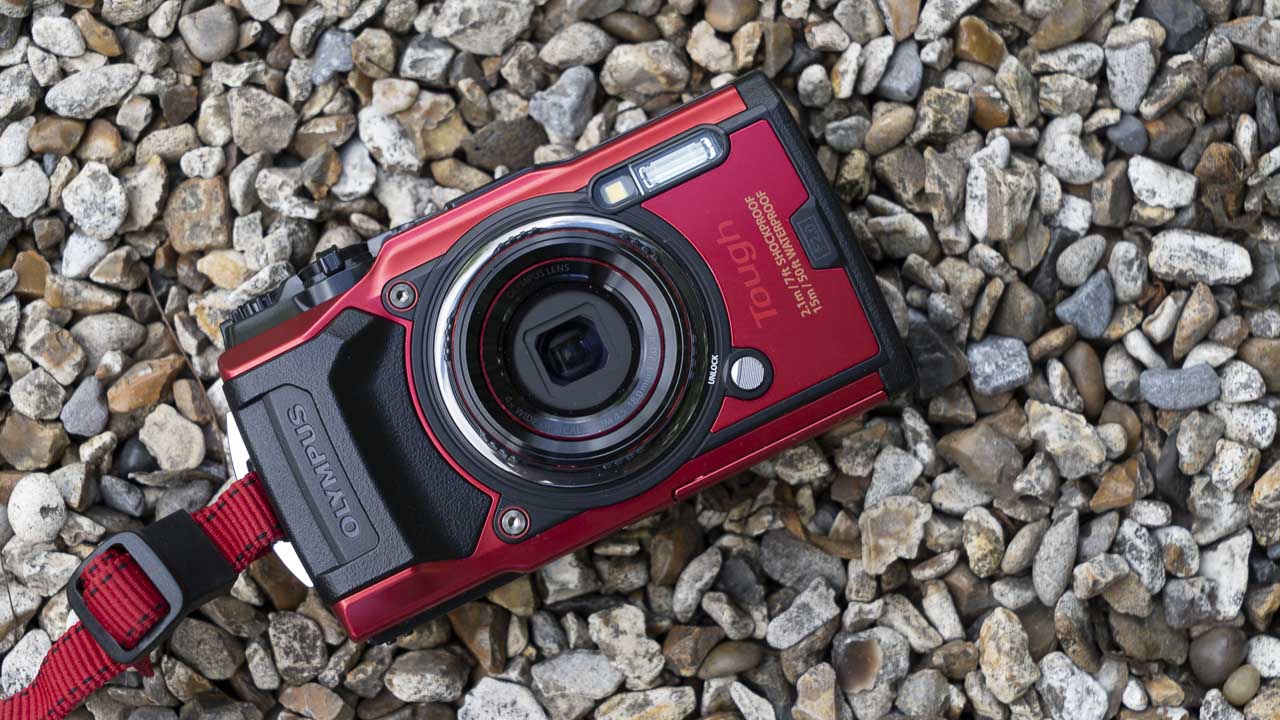The Olympus Tough TG-6 is a compact camera with a 12Mp 1/2.33-inch sensor. What makes it special is that it’s built to survive being dropped from 2.1m, crushed by 100kg, frozen down to -10°C and being taken 15m below water without a housing. That waterproofing also means it’s dust-proof so you can use it on the beach and not worry if you drop it.
Olympus has paired the Tough TG-6’s sensor with the TruePic VIII processing engine. That’s the same engine as is in the Olympus OM-D E-M1 II (and the TG-5). In the Tough TG-6 it enables a sensitivity range of ISO 100-12,800.
Like the TG-5 it replaces, the TG-6 has a lens with a focal length range that’s equivalent to 25-100mm. At the wide-angle end of the lens, the maximum aperture is f/2.0 and at the telephoto end, it’s f/4.9. That’s a useful range for general photography and the large aperture means the shutter speed can be kept up even in low light or underwater.
While the Olympus Tough TG-6’s target market might be adventurers, divers and families who want a childproof camera, the TG-5 proved popular with experienced photographers who want a camera that they can use in extreme conditions. I think the TG-5’s ability to record raw files may be part of the draw so it’s good to see that continue with the TG-6.
Like the TG-5, the TG-6 has Super Macro and Microscope modes. Super Macro mode reduces the closest focusing distance down to just 1cm from the lens while Microscope mode adds zoom capability to make objects larger in the frame.
In addition, there’s a logging system that can record a GPS, pressure, depth, temperature and altitude data, along with an electronic compass to show the direction of travel.
The Olympus Tough TG-6 is available from Wex Photo Video, Park Cameras and Amazon UK in the UK and BH Photo Video, Adorama and Amazon.com in the US.
Continuous Shooting
The Olympus Tough TG-6 is designed with adventure in mind so it’s handy that there’s a top continuous shooting rate of 20fps (frames per second). However, Pro Capture mode can make it easier to get the shots you want. In this mode the top shooting rate is 10fps but there’s a 5-image rolling buffer.
This starts with a half-press of the shutter button and when the button is pressed home, the last 5 images are saved to the card while the camera continues to shoot. The recording only stops when you release the shutter button. This means that you can capture action at 10fps from half a second before you press the shutter release fully.
Pro Capture mode is perfect for shooting fleeting and unpredictable moments.
Video
The Olympus TG-6 is capable of shooting 4K 93840 x 2160) video at 30p or 25p and up to approximately 102Mbps. In addition, Full HD (1920×1080) video can be shot at up to 120fps. That means you can capture action for dramatic slow-motion playback.
Videos are recorded as Mpeg4/H.264 Mov files.
Key Specifications
- Sensor: 12Mp 1/2.33-inch CMOS
- Lens: 4.5‑18.0mm (25-100mm equivalent) f/2.0-4.9
- Screen: 3-inch LCD with 1,040,000 dots
- Focusing: TTL iESP contrast detection system, Single AF, Face Detection AF, Spot, AF
- Tracking, Manual focus, Super Macro Mode
- Closest focusing distance: 1cm
- Exposure modes: i-Auto, Programme, Aperture priority, Custom shooting, Underwater,
- Microscope, Scene Modes, Art Filter, Movie
- Continuous shooting: 20fps for up to 14 raw files or until the card is filled with Jpegs, Pro
- Capture mode at up to 10fps
- Max video resolution: 4K (3840 x 2160) at 30p, 25p (approx. 102Mbps)
- Storage: SD/SDHC/SDXC (UHS‑I compatible)
- Dimensions: 113 x 66 x 32.4mm (without protrusions)
- Weight: 253g (including battery and memory card)
Build and Handling
Olympus clearly decided to stick with a winning formula for the TG-6 because it looks just like the TG-5. It’s not the most attractive camera around, but it’s designed to be used where other cameras can’t.
To maintain the waterproofing, the doors over the battery/memory card port and cable connection have dual locks. This means you have to flick the small latch open then flick open the larger lock to open the door. It takes a bit of force to close the doors properly so they can be locked. Opening and closing the doors is a nail-splitting procedure but it keeps everything safe.
There’s a switch marked Off/Log on the left side of the top plate. I’d advise keeping this off if you don’t need it as the logging system saps the life out of the battery even when the camera is turned off. If you leave it on and don’t use the camera for a few days, you’re likely to find the battery is flat when you need it.
Helpfully, you don’t need to activate the logging system to tag images with GPS data.
There’s a toggle switch around the power button for zooming the lens in and out. And just to the right of this, is the main control dial. This has knurled finish to make it easy to use with or without gloves. However, it’s also knocked out of position fairly easily and that can result in a change in the exposure.
As with the TG-5, the shooting mode dial is on the back of the camera. The movie record button is just above it while the navigation pad (with shortcut options) is below. Fairly standard stuff as shown in the image below.

Screen
In one of the few improvements made upon the TG-5, the Tough TG-6’s 3-inch screen has 1,040,000 dots (up from 460,000 dots). It gives a reasonably clear view of the scene. Initially I was concerned that it was too bright and that I was applying negative exposure compensation unnecessarily, however, I later found it was showing the images accurately.
The menu is surprisingly brief, so it’s easy to find the options you need. However, if you’re looking for aspects such as the file type, AF mode and white balance, you need to press the OK button to access the Live Control or quick menu. The parameters are shown in a column on the right of the screen and you can see the available settings along the bottom as you scroll up and down.
Performance
I used the Olympus Tough TG-6 is heavy rain and sunny conditions, and everything in between, as well as in a river. I’d summarise the results as being good for a waterproof compact camera.
I find that the TG-6 is prone to overexposing images. As a result, most of the shots I have taken so far were shot with -0.7Ev exposure compensation. This seems to be because the camera is calibrated for bright conditions. When I was shooting around a river, with lots of reflections, the exposure was good. This seems like a sensible move given that it’s very likely to be used on the beach, in snow or surrounded water.
At the lower sensitivity settings, the TG-6 captures a good level of detail for a camera with a 1/2.33-inch sensor. You can find a hint of noise in ISO 400 images at 100%, and it’s more apparent at ISO 800. I’d aim to make ISO 3,200 the maximum setting you use, but ISO 1,600 is a better choice if possible.
Provided the exposure is good, the TG-6 handles colours well in the default settings. As you’d expect, the colours are insipid if the image is overexposed. However, the auto white balance system copes well with most situations.
Chromatic aberration can be an issue towards the corners of images with high contrast edges. It’s easily dealt with in post-capture processing if you have the image-editing software and inclination.
Focusing
The AF system is pretty snappy, but it’s not the best at tracking moving subjects.
One area that is bound to impress is the TG-6’s Macro capability. It can get incredibly close to subjects and even zoom-in if necessary yet still deliver 12mp images. It’s worth shooting raw files in these situations as the images can benefit from a tweak to the contrast yo bring out the best of the subject. Luminance noise becomes quite visible in Macro images captured at ISO 800 or above, so you’re unlikely to want to make large (A3 prints), but they’re fine for smaller prints and sharing on social media etc.
Sample Images
Video
The Olympus Tough TG-6 captures a good level of detail in 4K video mode, but the audio is quite noisy. In addition to any handling and zooming noise, there’s a hissing sound. This means that unless the audio is quite loud and masks the hiss, you’ll probably need to replace it on any videos.
You can hear the hiss, handling and zooming noise in the sample video below. Initially, I thought the hiss was the sound of the wind in the trees, but it’s present in video shot inside in quiet conditions as well.
Verdict
The TG-5 was a popular compact camera and while the TG-6 doesn’t make a major upgrade, it still meets a need in the market. It’s also easy to use and can deliver good quality images in a range of conditions. However, if you’re using it for general photography, away from the beach or ocean, it pays to keep an eye on the exposure and nudge it down if the images are too bright.
The macro mode is great fun and produces impressive results.
It’s also capable of shooting decent 4K video, but avoid zooming the lens while recording, keep your hands still on the camera and listen out for the hiss. You can overlay royalty-free music post-capture if necessary.
The Olympus Tough TG-6 is also available from Park Cameras and Amazon UK in the UK and BH Photo Video, Adorama and Amazon.com in the US.





